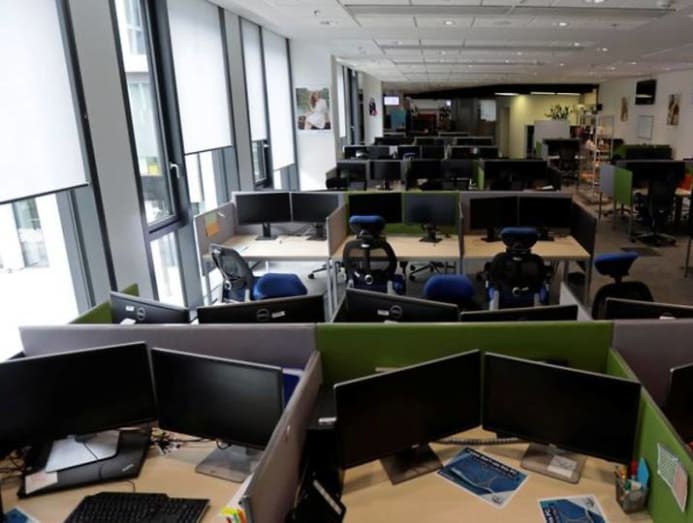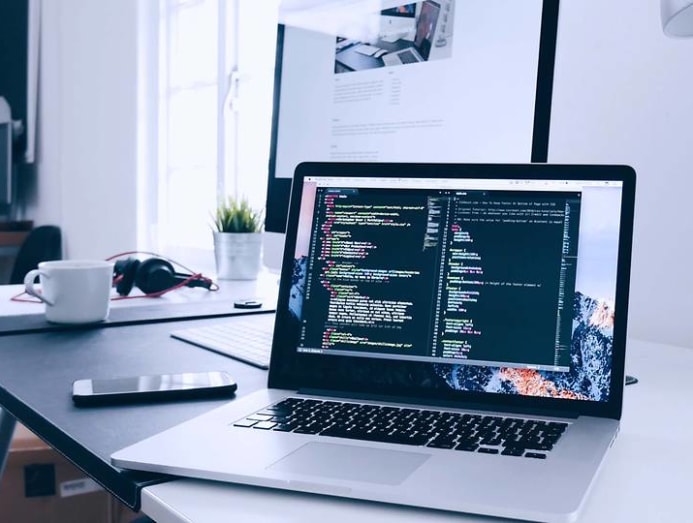commentary Commentary
Commentary: Please don’t end work from home. It’s not that bad
Workers have complained about working from home since offices migrated into homes since the coronavirus outbreak, but we are only on the cusp of realising its benefits, says Carys Chan.

A woman works from home. (Photo: Unsplash/Annie Spratt)
BRISBANE: As COVID-19 lockdown eases across the world, many employees are returning to the office, some eagerly, others less so.
In Australia where I live, a recent Qualtrics Return to Work & Back to Business study revealed that while a majority (60 per cent) of Australians surveyed expected to return to the workplace, more than half (52 per cent) felt uncomfortable about returning to their offices.
In Singapore, the same survey of over 500 Singaporeans showed a similar trend where 59 per cent of those surveyed were not comfortable returning to their offices.
For all the talk about the challenges of remote working, it seems odd there is now a sense of reluctance to head back to our workplaces.
LISTEN: Unfair firing and hiring practices under scrutiny during Singapore’s worst recession
READ: Commentary: Do you really want to work from home forever like some Twitter employees can?
In fact, many surveys conducted just three to six months into the pandemic show that most workers now want remote working to be a regular feature of their lives going forward.
Have the “woes” of remote working miraculously vanished?
BENEFITS OF REMOTE WORKING ARE BEGINNING TO MATERIALISE
As the pandemic unfolded, there was a sudden, mass adoption of remote working across organisations and industries around the world.
What was initially viewed as a shock or back-up solution soon became a golden opportunity for employers and employees to transcend boundaries and experiment with new ways of working.

Although employees, especially those with young children, continue to struggle with remote working, their prospects look brighter as schools and childcare centres reopen.
In fact, many workers have gotten into the rhythm of working from home, reporting increased productivity, more quality time with loved ones, and reduced commute stress.
According to a study by Microsoft, employees have also crafted and adapted to new daily routines, such as attending to familial responsibilities when they need to, signing into work earlier, or signing off later.
Remote working will continue to have sceptics and is certainly not suitable for everyone, but it’s foolish to put an end to it just as both organisations and employees are beginning to reap its benefits.
READ: Commentary: The biggest work-from-home exercise may have just begun. How ready is Singapore?
READ: Commentary: Annual performance reviews - an archaic HR practice we must disrupt
REMOTE WORKING PRESENTS NEW OPPORTUNITIES
With sufficient passage of time to make critical adjustments, employers and employees have made huge strides and undertaken big steps in adapting to the realities of work-from-home, making such arrangements now more efficient than ever.
Employees have upgraded their home computers, enhanced their broadband connection, and built dedicated workspaces equipped with noise-cancelling headphones, standing desks and ergonomic chairs at home.
Although we hear stories complaining of endless Zoom meetings, workers are now more likely to keep meetings short and efficient, based on Microsoft’s analysis of their Modern Workplace Transformation team’s collaboration patterns during the COVID-19 lockdown in the US.
Organisations are also stepping up their cybersecurity and privacy technology to protect their data infrastructure, investing more in digital transformation, and improving their business operations, according to a recent PwC survey.

COVID-19 has sped up digital transformation for Australian businesses by around six years, as the sudden shift to work-from-home swiftly eroded barriers such as the lack of a clear strategy, layers of decision-making, and reluctance to replace legacy software, according to research by cloud communications firm Twilio.
These combined changes have enhanced organisational resiliency in a short span of time.
A BLENDED WORKFORCE IS THE FUTURE OF WORK
With tech companies Twitter, Facebook, Shopify and Atlassian all announcing that employees can choose to work wherever they want after the pandemic, we should expect a growing number of employees who will demand more control over work arrangements.
Forward-thinking organisations should take this opportunity to experiment with a blended model of remote and in-person office work, keeping their workforce nimble while at the same time preparing for subsequent waves of COVID-19 that could emerge.
Most importantly, a blended workforce addresses most of the workplace issues that have plagued companies in the past two decades concerning work-life balance and talent acquisition.
READ: Commentary: I’ve been career oriented my whole life, until the COVID-19 pandemic took my ambition
READ: Commentary: Burned out while working from home? You should check your work-life boundaries
The COVID-19 lockdown has shown that most job tasks can be completed remotely, hence employers are no longer restricted to hiring in locations where they have offices. This in turn brings in more diversity and innovation to organisations.
Employee stress and distraction caused by commuting, presenteeism, open-plan offices and office politics have mostly been reduced as employees now get to choose when, where and how they work.
This autonomy enables them to carve out personal time and space to engage in creative and productive work, or reach out to co-workers or friends as and when they want to bounce ideas and gather feedback.

Nevertheless, any employer that adopts this blended approach will need to ensure clear communication so that employees are aware of their responsibilities and understand the expected role they must play in the wider organisation.
It is not that remote working issues have entirely disappeared. Rather, most employees have managed to overcome some of the earlier social and technological challenges posed by COVID-19 remote working.
Over time, with further development and mastery of the job crafting skills acquired in this COVID-19 lockdown, the new normal of a blended work environment is probably a good arrangement organisations should retain.
LISTEN: The COVID-19 vaccine will be the biggest product launch in history. Can we pull it off?
BOOKMARK THIS: Our comprehensive coverage of the coronavirus outbreak and its developments
Download our app or subscribe to our Telegram channel for the latest updates on the COVID-19 outbreak: https://cna.asia/telegram
Carys Chan is a Lecturer in Organisational Psychology at Griffith University’s School of Applied Psychology and a research member at the Centre for Work, Organisation and Wellbeing.





